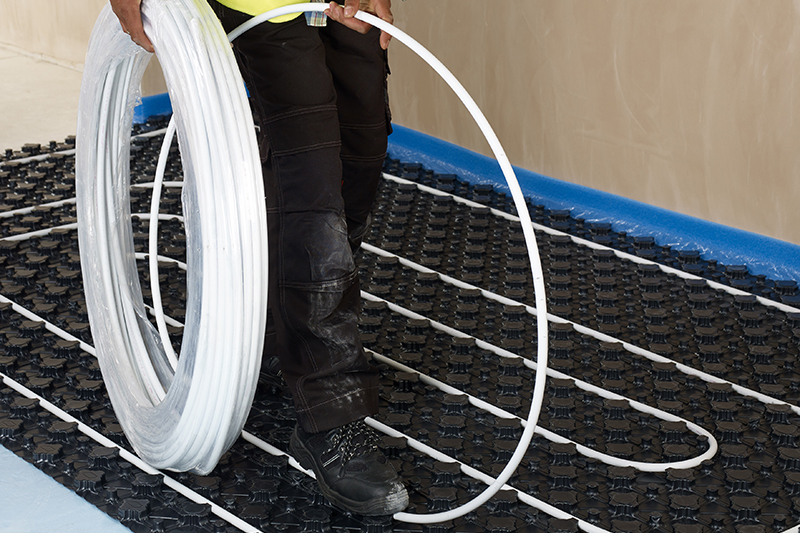
Caroline Ayres discusses the BPF Pipes Group’s approach to Net Zero.
One thing lockdown has highlighted is the difference empty roads and streets make to our planet’s health. Cleaner air and rivers, less pollution from traffic and factories, wildlife reclaiming territory; it has made people think a lot more about the planet as we come out of lockdown.
However, all these empty streets come at a cost in terms of the economy and so working to recover from the near-shutdown is crucial. The Construction Leadership Council’s ‘Roadmap to Recovery’ is a strategy to drive the recovery of the construction and built environment sectors, and through them the wider UK economy, following the COVID-19 pandemic and economic downturn. The strategy includes commitments to deliver high quality, zero carbon and sustainable outputs.
BPF Pipes Group members strongly support the Recovery Plan, which teams up ‘sustained economic growth’ with ‘low carbon, sustainable and better-quality outputs and outcomes.’ To achieve such ambitions requires commitment to making product choices which balance ethics, performance and economics.
As the focus on reducing carbon and greenhouse gas emissions turns towards the construction sector, opportunities exist to reduce the environmental impact from building construction at the design stage. Making ethical early choices and going beyond the minimum required will help the move ultimately towards zero carbon building, mitigating climate change.
Whilst committed to environmental change, there is a risk of ‘information overload.’ This is why the BPF Pipes Group set out in 2019 to develop a series of clear and succinct bulletins for specifiers and decision makers, using the selection of sustainable plumbing systems as an example.
The six bulletins introduce Environmental Product Declarations (EPDs) and Life Cycle Assessments (LCAs) and how to use them in building design to aid product choice. The environmental effects of a product over its entire lifecycle, including extraction of raw materials, production of materials and the product, construction, use and end-of-life treatment are assessed. They can be found at www.bpfpipesgroup.com/support-downloads/technical-guidance
The comparison of available alternatives for plumbing systems show categorically that plastic piping systems – with their excellent and long-lasting technical performance – are the best environmental choice.
Plastic piping systems have all the necessary attributes to make them the ideal partner in providing low carbon and renewable heating solutions. Energy is the dominant contributor to climate change, accounting for around 60% of global greenhouse gas emissions.
District heating systems can significantly reduce carbon emissions by using low carbon or renewable sources of heat. Some renewable heat options are not feasible for individual properties but work well in a district heating system.
The distribution pipework between the heat source and the building to be supplied with heat is laid below ground. It therefore needs to withstand external soil and traffic loadings and internal water pressure including fluctuations in the same way as a water distribution pipe; and additionally, be capable of constant operation at elevated temperatures whilst minimising heat loss during transmission. It is important that proven systems are selected for these applications which operate at high temperatures and pressures. Plastic piping systems specifically designed for district heating systems (polymer pipes within a high-performance foam insulation) meet all the necessary performance requirements with the added benefits of easy installation (flexible and few joints required) and ultra-low heat losses.
Heat pumps are already being installed in increasing numbers in the UK. Plastic pipes are ideal for extracting heat from ground source heat pumps, whether from 1 to 1.5 metres deep, or in vertical boreholes. Plastic pipes provide the corrosion resistance, chemical resistance, flexibility, impact resistance, pressure capability and temperature resistance required. The usable heat generated by the heat pump is then distributed around the house through underfloor heating – also using plastic pipes, or even wall or ceiling embedded pipes. Underfloor heating systems incorporating flexible pipes are simple to install and can be adapted to all common construction methods. The installation of the system is a first fix operation and can be completed in a single visit. Significant carbon savings are achievable using a combination of heat pumps and underfloor heating. The Government’s Renewable Heat Incentive is supporting heat pumps until 2022, and then it will be replaced by the Clean Heat Grant from 2022. It is unclear currently what impact the new £2 billion Green Homes Grant will have on renewable heat and what heating technologies will be supported, if any.
Working towards net zero carbon construction means manufacturing and delivering efficiently whilst minimising risk, minimising pollution and minimising carbon footprint. Plastic pipes, with their low environmental impact, long lifespan, easy installation and high performance properties, have proven themselves absolutely ideal for this purpose.






